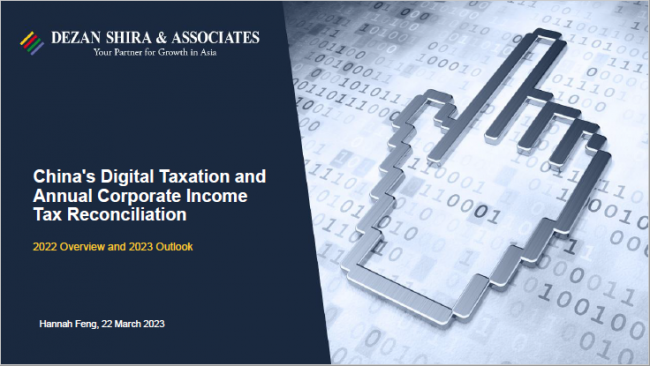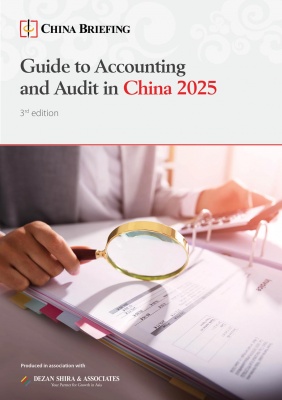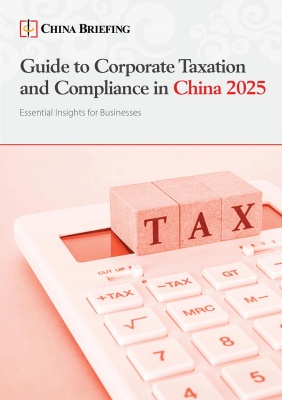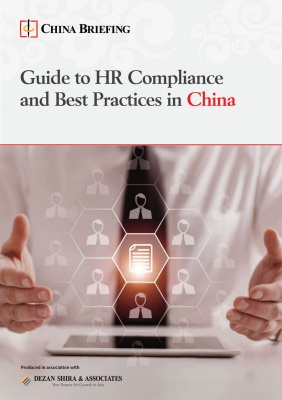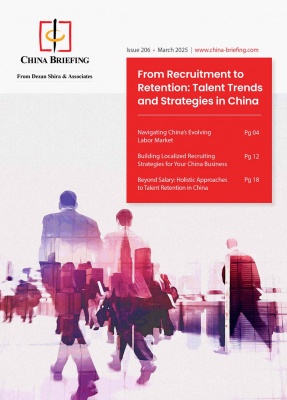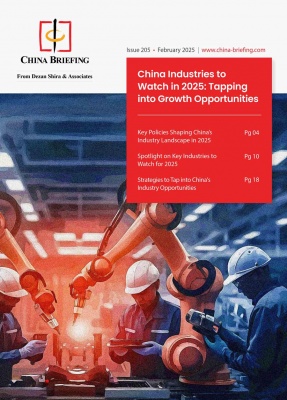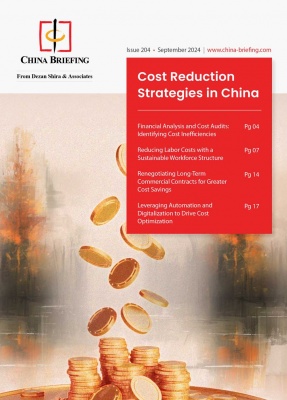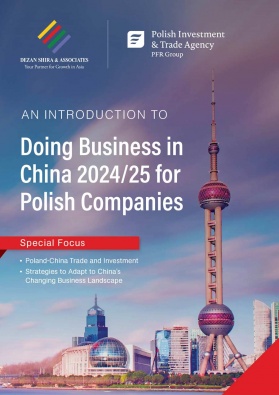China’s 2025 Outbound Investment: Key Markets & Sector Trends
China’s outbound direct investment is shifting toward emerging markets in Southeast Asia, the Middle East, and Central Europe, focusing on sectors such as new energy, semiconductors, and infrastructure amid rising geopolitical tensions.
As geopolitical tensions and regulatory barriers in Western markets continue to grow, China’s outbound investment is increasingly pivoting toward emerging economies in 2025. Countries in Southeast Asia, the Middle East, and Central and Eastern Europe are actively courting Chinese capital, offering incentives and policy support to attract investments in high-growth sectors such as new-energy vehicles (NEV), semiconductors, technology, and infrastructure.
Hungary, Türkiye, and Morocco are positioning themselves as key destinations for Chinese electric vehicle (EV) and lithium battery manufacturers, leveraging established automotive industries and competitive tax policies. Meanwhile, Southeast Asia—particularly Thailand and Malaysia—is tapping into China’s expertise to accelerate its industrial upgrade, expanding partnerships in both the automotive and semiconductor sectors. In the Middle East, countries like Saudi Arabia and the UAE are strengthening economic ties with China to drive diversification efforts, particularly in renewable energy, e-commerce, and technology.
This article examines the latest trends in China’s overseas investment, highlighting key destinations, sectoral priorities, and the broader economic shifts shaping global investment flows.
Overview of China’s outbound direct investment in 2024
China’s total ODI reached US$162.8 billion in 2024, reflecting a 10 percent year-on-year increase, according to data from China’s Ministry of Commerce (MOFCOM).
Non-financial ODI saw an 11 percent rise to US$143.9 billion, with investments in Belt and Road (BRI) partner countries growing by 5 percent to US$33.7 billion.
Despite a broader decline in global mergers and acquisitions (M&A) activity, Chinese enterprises strategically focused on high-growth sectors and emerging markets, demonstrating resilience in a complex economic environment.
This table below details China’s ODI trends in 2024, detailing regions, companies, investment types, and their respective production goals.
| Countries Competing for Chinese Factories | ||||||
| Region | Country | Company | Type of Plant | Investment | Annual Capacity | Target Start of Production |
| Eastern Europe and North Africa | Hungary | CATL | Lithium battery | EUR 7.34 billion | 100 GWh | 2025 |
| Türkiye | EVE Energy | Lithium battery | EUR 1 billion | 30 GWh | 2026 | |
| Sunwoda | Lithium battery | EUR 245 million | / | 2026 | ||
| Nio | Battery swap station | / | / | In operation | ||
| BYD | NEV | / | / | 2027 | ||
| BYD | Electric bus | EUR 20 million | / | In operation | ||
| BYD | Automobile | US$1 billion | 150,000 vehicles | 2026 | ||
| Gotion High-tech | Lithium battery | RMB 9.25 billion | / | 2026 | ||
| Morocco | BTR New Material | Lithium material | RMB 3.5 billion | / | / | |
| Huayou Cobalt | LFP and lithium refining | / | / | 2026 | ||
| North America | Mexico | BYD | NEV | / | / | / |
| JAC Motors | Assembly | RMB 1.45 billion | / | In operation | ||
| Middle East | Saudi Arabia | TCL Zhonghuan | PV silicon wafer | US$2.08 billion | 20 GW | / |
| JinkoSolar | PV cells and module | ~US$980 million | 10 GW | / | ||
| Envision Group | Wind power equipment | / | / | / | ||
| Lenovo | Laptops, desktops, and servers | / | Estimated millions of units annually | 2026 | ||
| Tencent Cloud | Data center | Over US$150 million in future investment | / | Launching in 2025 | ||
| UAE | Trina Solar | Full PV chain | US
$5 billion |
50,000 tons of high-purity silicon, 30 GW of wafers, 5 GW of modules | / | |
| Oman | United Solar | High-purity polysilicon | US$1.35 billion | 100,000 tons | 2025 | |
| Southeast Asia | Thailand | BYD | Automobile | RMB 6.98 billion | 150,000 vehicles | In operation |
| Great Wall Motor | Automobile | RMB 2.49 billion | 80,000 vehicles | / | ||
| Chery Automobile | NEV | / | 50,000 vehicles | / | ||
| Changan Automobile | Automobile | RMB 4.05 billion | 200,000 vehicles | 2025 | ||
| GAC Aion | Automobile | RMB 465 million | 50,000 vehicles | / | ||
| Vietnam | Universal Scientific Industrial | Electronic equipment | US$42 million | 10 million modules | / | |
| Singapore | JCET | Packaging and testing | / | / | In operation | |
| Tongfu Microelectronics | Packaging and testing | RMB 22.05 million | / | / | ||
| Malaysia | Huafeng Test & Control Technology | Integrated circuits | / | / | / | |
| Source: Caixin Global | ||||||
Key investment destinations
Asia: The leading investment hub
Asia remained the top destination for Chinese overseas M&A for the sixth consecutive year. Despite an overall slowdown, investments in ASEAN countries surged by 13 percent year-on-year, with Singapore, Indonesia, and Thailand being key recipients. Japan and South Korea also saw an increase in both M&A value and deal volume, reaffirming China’s strategic emphasis on regional trade and economic integration.
Africa and emerging markets keep gaining momentum
Meanwhile, China’s investment footprint in Africa also expanded significantly in 2024, defying the global trend of declining M&A activity. Key sectors attracting Chinese capital included infrastructure, mining, and energy, aligning with China’s broader development cooperation goals under the BRI Initiative.
Similarly, investments in Brazil and India recorded notable increases, reflecting China’s efforts to diversify its international economic partnerships.
Declining M&A activity in US and Europe
On the other hand, Chinese investment activities in the US dropped to a 10-year low in both value and deal volume, primarily due to heightened geopolitical tensions and regulatory barriers. The total M&A value of Chinese enterprises in BRI partner countries also declined by 33 percent from the previous year, to US$13 billion.
Meanwhile, investments in Europe faced headwinds, although specific markets, such as the Nordics, experienced moderate growth.
Emerging pivotal markets
As regulatory scrutiny intensifies in the US and Europe, Chinese investors are recalibrating their outbound strategies by engaging more actively with emerging economies that offer policy predictability, industrial ambition, and strategic alignment. This pivot is underpinned by the rising importance of key geographies—including Hungary, Türkiye, Morocco, Malaysia, Saudi Arabia, and Thailand—which are rapidly becoming focal points for Chinese investment in high-growth sectors such as new energy, semiconductors, and digital infrastructure.
In Central Europe and the Mediterranean, Hungary, Türkiye, and Morocco are emerging as core nodes in China’s new energy value chain. Hungary, for instance, received nearly half of its 2024 foreign investment from seven Chinese projects in the automotive and electronics sectors. CATL and BYD lead this wave, with CATL’s EUR 7.3 billion (US$8.03 billion) battery facility marking one of the largest Chinese investments in the EU.
Türkiye, despite its comparatively higher corporate tax rate, has extended exceptional fiscal incentives—including US$800 million in tax exemptions and customs relief—to attract Chinese EV giants like BYD, which is building a US$1 billion plant. Morocco is likewise positioning itself as a stable, politically neutral hub, drawing in US$366 million from BTR New Materials for an anode plant that anchors the country’s role in the global lithium battery supply chain.
As established, Southeast Asia continues to rise as a priority market for Chinese manufacturers. Thailand, aiming for zero-emission vehicles to constitute 30 percent of total production by 2030, has become a springboard for Chinese NEV firms. Companies including Changan, SAIC, and Great Wall Motors have already broken ground there, attracted by targeted subsidies and rapidly increasing local demand.
Meanwhile, Malaysia is integrating itself deeper into China’s semiconductor ecosystem. It has transitioned from lower-value assembly to a broader semiconductor strategy that now prioritizes design, wafer fabrication, and advanced manufacturing—fields in which Chinese chipmakers are increasingly investing to sidestep Western trade restrictions and embed themselves in diversified supply chains.
In the Middle East, strategic partnerships with China are central to economic diversification plans. Saudi Arabia, for example, is deepening its collaboration with Chinese tech, logistics, and renewable energy firms. The kingdom is not only hosting large-scale solar and electronics projects by firms like TCL Zhonghuan and JinkoSolar but is also attracting cloud and hardware investments from Tencent, Lenovo, and Meituan.
Vision 2030 is driving the development of digital infrastructure, e-commerce platforms, and even esports venues, all with Chinese capital and expertise. Oman and the UAE are also entering the frame, with JA Solar and Trina Solar leading multi-billion-yuan projects across the region.
These markets are offering investment incentives that stand in stark contrast to the tightening policy regimes in developed economies. Hungary provides corporate tax reductions of up to 80 percent, R&D subsidies, and regional cash grants. Türkiye delivers extensive tax exemptions and import quotas, despite a higher base corporate tax rate. Morocco highlights political stability and geographic distance from conflict zones as key competitive advantages. This redirection of capital flows not only reflects China’s effort to hedge geopolitical risks but also underscores a broader recalibration of global investment patterns.
Emerging markets are no longer just passive recipients of capital; they are shaping investment frameworks to actively attract Chinese firms, creating new centers of industrial and technological gravity beyond the traditional G7 orbit.
Sectoral investment trends
Advanced manufacturing and mobility drive M&A
The most attractive sectors for Chinese overseas M&A in 2024 were advanced manufacturing and mobility, technology, media, and telecommunications (TMT), and mining and metals. These three sectors collectively accounted for 56 percent of the total M&A value.
The mining and metals sector emerged among the top three industries by value, highlighting China’s focus on securing critical raw materials for industrial and technological advancement.
Infrastructure and green energy investments
Chinese enterprises continued to expand their overseas engineering, procurement, and construction (EPC) projects, with newly signed contracts reaching US$267.3 billion, marking a historical record. Investments in energy-saving and environmentally friendly projects surged by 13 percent YoY to US$49.3 billion, driven by China’s commitment to sustainable development and green infrastructure initiatives.
Strategic investment approaches
Shifting focus to emerging markets
With increased regulatory scrutiny and geopolitical challenges in Western markets, China’s ODI strategy has shifted toward emerging economies that offer more investment-friendly policies. Countries such as Türkiye, Hungary, Malaysia, and Saudi Arabia are actively competing for Chinese capital by providing incentives, relaxed regulations, and tax benefits. This realignment highlights China’s strategy of fostering deeper economic ties in regions that align with its industrial and technological priorities.
For instance, Hungary has become a central hub for Chinese NEV and lithium battery investments, positioning itself as a strategic gateway to the European market. Türkiye has introduced generous incentives to attract Chinese auto manufacturers, while Malaysia is leveraging China’s semiconductor expertise to elevate its position in the global chip supply chain.
Industrial upgrades and localized production
China’s outbound investment is increasingly focused on establishing localized production hubs rather than relying solely on export-driven growth. This shift aligns with host countries’ objectives to modernize their industries and integrate into global supply chains.
Southeast Asia, for example, is transitioning from a low-cost manufacturing base to a center for high-end production in sectors like NEVs and semiconductors.
Similarly, Middle Eastern nations, particularly Saudi Arabia, are seeking Chinese partnerships to develop their technology, e-commerce, and renewable energy sectors as part of broader economic diversification efforts.
Outlook for 2025
As China enters the final year of its 14th Five-Year Plan in 2025, the trajectory of ODI will be shaped by both emerging opportunities and persistent challenges. The evolving geopolitical landscape, rising protectionism, and global economic uncertainty will continue to test Chinese enterprises seeking international expansion. However, China’s commitment to high-quality development, technological innovation, and deepened economic partnerships under the BRI will serve as key drivers of sustained ODI growth.
One of the most critical factors influencing future outbound investment is the ability of Chinese enterprises to navigate an increasingly complex regulatory and policy environment. As Western economies impose greater restrictions on foreign investments, particularly in technology and critical infrastructure sectors, Chinese firms will need to refine their strategies, focusing on diversification and strengthening engagement with emerging markets in Asia, Africa, the Middle East, and Latin America.
At the sectoral level, advanced manufacturing, mobility, and technology-driven industries will remain at the forefront of China’s overseas M&A and greenfield investments. The push for innovation—supported by China’s leadership in global technology clusters—will encourage enterprises to prioritize strategic acquisitions, research collaborations, and talent expansion abroad. Additionally, the growing emphasis on sustainable development and green infrastructure will further accelerate investment in renewable energy, environmentally friendly projects, and smart logistics solutions.
Despite recent declines in overseas M&A activities, Chinese enterprises are expected to recalibrate their international investment approaches, leveraging government-backed financial tools, cross-border e-commerce, and digital trade platforms to expand their global footprint. Moreover, as economic partnerships with ASEAN, Africa, and the Middle East deepen, new policy incentives and trade agreements will create fresh avenues for investment.
Looking beyond 2025, China’s outbound investment strategy will need to balance resilience with adaptability. Companies that align with national development priorities, enhance their technological self-sufficiency, and adopt flexible global strategies will be best positioned to thrive.
Also read:
- China’s ODI Trends: Sources, Destinations, and Key Sectors 2023-24
- China Outbound Direct Invest (ODI) Tracker: 2024-25
- US-China Relations in the Trump 2.0 Era: A Timeline
About Us
China Briefing is one of five regional Asia Briefing publications, supported by Dezan Shira & Associates. For a complimentary subscription to China Briefing’s content products, please click here.
Dezan Shira & Associates assists foreign investors into China and has done so since 1992 through offices in Beijing, Tianjin, Dalian, Qingdao, Shanghai, Hangzhou, Ningbo, Suzhou, Guangzhou, Haikou, Zhongshan, Shenzhen, and Hong Kong. We also have offices in Vietnam, Indonesia, Singapore, United States, Germany, Italy, India, and Dubai (UAE) and partner firms assisting foreign investors in The Philippines, Malaysia, Thailand, Bangladesh, and Australia. For assistance in China, please contact the firm at china@dezshira.com or visit our website at www.dezshira.com.
- Previous Article US-China Relations in the Trump 2.0 Era: A Timeline
- Next Article







